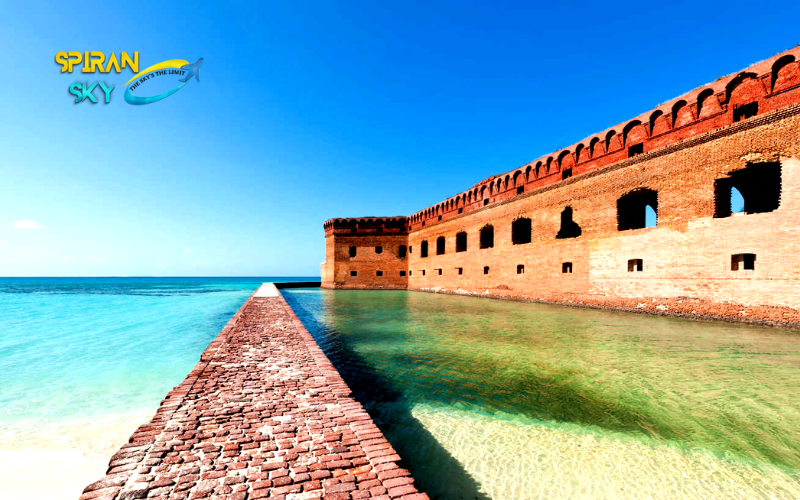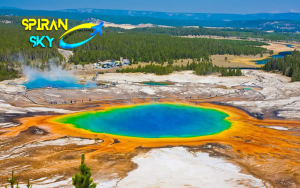Also, there Are fewer National Parks on the East Coast of the United States than on the West Coast.
As you might expect from National Parks, it’s the west coast states such as Colorado, Utah, and California that get the most press.
They do, of course! From the enormous Sequoia trees and the Coastal Redwoods in the state of California, to the most famous canyons of all.
There are many magnificent sights in the western states of the United States. It is important, however, not to overlook the East Coast.
As you travel eastward through the United States, you’ll find some gorgeous parks. National parks are great for spending time in nature, especially those along the East Coast due to their diversity.
National parks abound on the East Coast, from the most popular to the least known, the East Coast is full of national parks.
As a park situated on the East Coast is a diverse and amazing region with seven separate islands. the area is made up of seven different islands.
For those who are seeking caves or natural springs on the East Coast, you are in luck. Read on to learn about the surprising biodiversity you can view along the East Coast.
Here are our top ten most memorable national parks on the east coast. The parks in this list are a mix of both National Parks and other sites managed by the National Park Service.
Such as Monuments and Grand Canyons. There are even a couple of state parks on this list that you should not miss!
What Would (Or Should) You Do On The East Coast?
Airfares are expensive. Crossing the country can easily To the price of your trip, add $3,000. A recent trip to Redwoods & Crater Lake cost the five of us over $3,200 in airfare!
Driving can be a lot more affordable way to get to your east coast vacation destination. alternative, even when gas is taken into account.
There is also a great deal of difference between the two halves. There are hardwood forests on the East Coast, and Atlantic beaches differ from Pacific beaches in their rocky cliffs.
What To Expect On The East Coast
The two coasts of the US have some distinct differences. There are some that are obvious, and some that are not.
What The Weather Is Like
Like almost everywhere else on earth, the East Coast has seasons. You can expect snowfall from about Washington, DC northward for about the month of December until about the month of April.
Heat and humidity are expected along the coast. Summer months in the east are extremely hot and humid, while summer months in the west are dry.
A Foliage
There will also be a difference in the foliage. A majority of hardwoods found on the East Coast are maple, oak, and cherry.
The landscape also includes conifers, such as Hemlock, White Pine, and others can also be found in the landscape.
The East, however, has very few old-growth forests. Early European settlements were established. on the East Coast, so the forests were never a threat.
There was a couple of hundred-year lead period before loggers took hold of many western forests, which is the only reason they are protected today.
When the hardwoods begin changing colors in the fall, it’s an amazing sight to see.
Autumn is one of the busiest months for parks such as Shenandoah and Acadia because of their wonderful fall colors.
(Relatively) Fewer People
Last but not least, the majority of National Parks are found in the west, with the exception of Acadia and the Great Smoky Mountains National Park.
Depending on where you visit, you might find the East Coast to be less crowded (relatively).
Ranking Of East Coast National Parks
When you next travel to the East Coast, you must visit these 15 parks.
Besides the eleven National Parks with official designation, there are also four others that are also worth visiting, because they are equally as spectacular.
Most parks on this list are within an hour of the Atlantic Ocean’s coast. While we’ve included several parks that are still considered “Eastern”, there are a few others that aren’t.
It is unambiguous that they are located on the eastern half of the country, even though they would never be classified as being on the coast.
1. Acadia National Park

Located on the seashore of Maine, Acadia National Park has an area of about 50,000 acres. It is the largest national park in the United States.
Having been created in 1916 by wealthy landowners, this large acreage is scattered here and there as a result of how it was created by them.
Mount Desert Island is home to the majority of the park. As the highest point on the east coast of the United States, Cadillac Mountain is a glacier-scoured granite peak surrounded by woodland and rocky beaches.
National Parks are all different in their boundaries, but Acadia’s is unique. Mount Desert Island, which it occupies, is home to over half of its population.
These lands make up an unusual boundary that surrounds the park, a mix of both public and private.
2. Shenandoah National Park
In the Blue Ridge Mountains of Virginia, there are 300 square miles of rugged terrain.
A majority of the park’s trees become colored in the fall around the middle of October since 95 percent of it is covered by trees.
There are over 500 miles of hiking trails in the park, but Skyline Drive is the park’s most famous attraction.
105 miles of Skyline Drive run along the crest of the Blue Ridge Mountains through the park, the only public road.
Traveling the entire length of the Park in a vehicle takes about three hours on a clear day, but you should allow much longer to account for frequent vista stops and short hikes.
Near the park’s Skyline Drive, 100 miles of the famous Appalachian Trail pass through it, giving you a great view of the park along the way.
Fall tourists from far and wide are drawn to the colors wide to this park, which has dozens of hiking trails. Still, even when the park isn’t very crowded, it’s worth a visit.
Skyline Drive crosses the 105-mile mountain ridge and provides breathtaking views for those who don’t like walking. Black bears and deer are likely to be seen on your hike!
More than 100 years have passed since the Shenandoah Caverns attracted tourists.
This 200-foot-deep cave system contains many interesting formations, including the Breakfast Bacon cave formations that National Geographic featured.
3. Great Smoky Mountains National Park
There have been over four decades of visits to the Great Smoky Mountains, making it the most visited National Park in the United States.
There are stores, restaurants, and activities for the whole family in Gatlinburg, TN, the park’s gateway town.
The area has 850 miles of hiking trails, including 71 that run along the Appalachian Trail.
Over 2,100 miles of mountain streams and rivers are found in this vast land, which includes 16 mountains towering over 6,000 feet above sea level.
Summers are an excellent time to visit this park, which straddles the Tennessee and North Carolina borders.
Even on the busiest days, you can still find remote places to be away from the crowds.
4. Delaware Water Gap National Recreation Area
Delaware Water Gap should be next to become a national park since it receives the same number of visitors as Yellowstone every year.
In less than an hour’s drive from New York City, the Delaware Water Gap is located on Pennsylvania’s eastern border.
There are more than 100 miles of hiking trails in this park, along with 40 miles of the Middle Delaware Scenic and Recreational River.
There are also three swimming beaches and many grills and pavilions if you wish to enjoy a day that is free from the hustle and bustle of the city.
5. New River Gorge National Park
There is a lot to see at New River Gorge National Park, but the most popular attraction is the New River.
The 53-mile stretch of river within this National Park is renowned for its whitewater rafting and kayaking adventures, which can be taken by guided tours.
There are also plenty of hiking trails to choose from. Overlooking the New River from the Main Overlook is the highlight of the Grandview Rim Trail (3.2 miles round trip).
There is a steep but short trail leading to Kates Falls (1/2 mile round trip). The Sandstone Falls Boardwalk provides an easier waterfall trail, which is only one and a quarter miles long.
6. Washington, DC National Monuments
The number of National Monuments in DC is so great that you could spend an entire weekend here and not see them all.
The National Mall is the area between the US Capitol Building and the Lincoln Memorial there are three locations in Washington, DC that are a must-see for anyone visiting the city for the first time.
There are most Smithsonian Museums along the National Mall, including the Washington Monument dead center.
There is no entrance fee to these museums, so arriving at the opening time will be the best way to beat the crowds.
7. Everglades National Park
This huge national park consists of canals, islands, marshes, and swamps.
Everglades’ lower parts are already being flooded by rising sea levels as a result of climate change.
There are many attractions that make the Everglades a wonderful diversion from constant South Florida people and lighting at night, with a driving time of about an hour from Miami.
8. Cuyahoga Valley National Park
There is a rich history associated with this park in northeast Ohio. A decades-long dumping of toxic waste led to the Cuyahoga River catching fire in 1969.
This led to the creation of the Clean Water Act and the Environmental Protection Agency.
A national park was established in 2000 for the 33,000 acres of Cuyahoga National Park in north central Ohio.
Canoeing and kayaking are popular along the river, which is home to over forty fish species.
More than 100 waterfalls are scattered throughout the valley, making it an ideal place for hiking and biking.
The Cuyahoga Valley Scenic Railroad is one of the most enjoyable features of the Cuyahoga Valley National Park.
This natural habitat provides opportunities for viewing beavers, deer, herons, eagles, and other wildlife in their natural environment. Get a taste of Cuyahoga’s natural beauty in the fall.
9. Pictured Rocks National Lakeshore
Approximately 73,236 acres of land, along with 42 miles of shoreline, are part of Pictured Rocks National Lakeshore, which is surrounded by Lake Superior.
The Upper Peninsula of Michigan has 15 kilometers or so of bright cliffs made of sandstone. that rise 50-200 feet above the lake.
Through cracks in its surface, groundwater seeps down its face, creating multicolored cliffs.
It is most often iron, copper, manganese, and limonite in this area that produce the colors; iron produces reds and oranges, copper produces blues and greens, and manganese produces browns and blacks.
The lakeshore includes 12 miles of stunning beaches, approximately five miles of gigantic sand dunes, multiple waterfalls, and lighthouses in addition to the Pictured Rocks.
The park is crisscrossed by more than 100 miles (161 km) of trails.
10. Baxter State Park
The Baxter State Park in northern Maine is another one of those parks that really should be a national park. It has 209,501 acres, making it the largest state park in the country.
Before it was designated a national park, this place was already the center of a contentious debate.
She announced that it will one day become part of North Maine Woods, the national park she had planned to create with Burt’s Bees co-founder Roxanne Quimby.
She switched her focus from making it a National Park to a National Monument in response to local opposition and the insane amount of work that would be required to establish it as a National Park.
There are more than 87,500 acres that had been originally donated by Mrs. Quimby that became the Katahdin Woods and National Monument in 2016.
11. Congaree National Park
The Congaree National Park in South Carolina is no exception to the East Coast’s national parks.
There are 170-metre champion trees that are the largest living trees in their species covering the canopies of skyscrapers.
To make the most of the 25 miles of hiking trails, it is advised to take to the water in a canoe or kayak.
The park is also unique in that it features elevated pathways that allow visitors to safely walk underneath the Congaree and Wateree Rivers to observe the portions of the park that are submerged by these waters.
There are a dozen floods a year in the area, and the region is home to a wide variety of wildlife that lives in the water.
There are thousands of fireflies that illuminate the sky from mid-May to mid-June, which is just one of the many splendors that this majestic park has to offer.
12. Mammoth Cave National Park
There is something unique about Kentucky’s Mammoth Cave National Park. At least 365 miles of caves are located in this national park, making it the world’s longest cave system.
UNESCO has also recognized the park as a World Heritage Site.
You may be lucky enough to observe bats, salamanders, and cavefish if you book a guided tour to explore this cave system.
You will crawl for long periods of time on your stomach during the 6-hour tour, so choose a tour that suits your agility!
There are a wide variety of activities that can be enjoyed in the park, besides the underground adventures, there are 85 miles of trails for biking, hiking, and horseback riding along with campgrounds.
13. Adirondack Park, NY

Upstate New York, United States, contains Adirondack Park, a large park. It is the largest protected area in the contiguous United States, covering an area of 6.1 million acres (2.5 million hectares)).
The area is popular among outdoor enthusiasts, offering camping, hiking, hunting, and fishing activities.
There is a system of routes in the park that travel across its numerous mountains, lakes, and woods.
The area is a great place to see a wide variety of plants and animals. The area also has a number of lakes and streams that are popular for fishing and boating.
There are about 150 miles (240 km) of mountains along upstate New York’s Adirondack Mountains, which include this park.
14. Dry Tortugas National Park
The Dry Tortugas National Park in Florida offers a completely different kind of experience. The national part of the Florida Keys is 70 miles from Key West and consists of seven islands.
Those who love exploration and marine life will love this national park. Fort Jefferson, one of the most imposing forts of the 19th century, is just one of the many shipwrecks to explore.
Garden Key is home to the visitor center, campgrounds, and park headquarters, which are all located at Fort Jefferson.
Ferries, boats, and seaplanes are the only ways to get around Dry Tortugas. There are no amenities at this national park, so plan accordingly!
15. Biscayne National Park
Mangroves, seagrass beds, and coral reefs are among the plant and animal life found in Biscayne National Park.
As well as West Indian manatees and American crocodiles, it’s home to a host of endangered species.
There are many stunning reefs and streams to discover in the park, which is popular for snorkeling, diving, and. Boating destination.
Several cultural and historical landmarks can also be found in the park, including Stiltsville. Located in the middle of Biscayne Bay, this is a group of historic wooden houses on stilts.
There are numerous trails that traverse the park., where you can see plants and animals.
There is also an educational exhibit center that offers information about the park’s natural history.
Conclusion
The East Coast offers several interesting national parks, each with its own unique activities and sights.
There’s plenty to entertain and intrigue you on the East Coast, from 19th-century castles to the world’s longest cave network!
Also Read: The Largest National Parks In The United States And Canada




